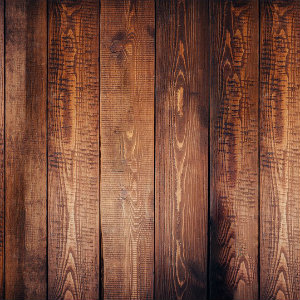Did you or a loved one hurt yourself in a fall on an uneven surface? You may have questions such as:
- Why wasn't the floor properly maintained?
- Is the property owner responsible for my injuries?
- Do I have a case for a lawsuit?
- What kind of compensation could I receive?
Our experienced personal injury lawyers are here to help you receive the financial compensation you need following an injury.

Negligent property owners who fail to maintain their properties must answer for injuries they've caused.
Property owners have a legal duty to maintain safe conditions for any individuals who may visit their properties. This applies both to business owners as well as homeowners.
as well as homeowners.
If a property has unsafe conditions which result in a slip, trip, or fall accident, the owner may be held liable for the victim’s expenses. Visitors are unlikely to be aware of these dangers until it’s too late and an accident has already happened.
Dangerous floor conditions are one of the leading causes of these accidents. The National Floor Safety Institute estimates that “floors and flooring materials contribute directly to more than 2 million fall injuries per year”.
If you’ve suffered injuries as a result of poor floor conditions or uneven outdoor walking surfaces, it’s important to know your rights as a victim.
Common Uneven Surface Conditions
There are a variety of ways uneven surface conditions can contribute to a fall. It's important for all property owners to stay mindful of their property's condition and to complete necessary maintenance. If an uneven surface condition causes an injury, the property owner may be held liable if negligence can be proved.
If you've been injured in a fall due to uneven surface conditions, consider meeting with a personal injury lawyer to discuss your options for compensation.
FREE CONSULTATION
Uneven Sidewalks
In some municipalities, property owners are responsible for the condition of the sidewalks outside of their homes or businesses. Sidewalks with uneven elevations create a tripping hazard for anyone who walks them. Pedestrians can easily miss these hazards and may end up with serious injuries if they trip and fall onto the concrete.
Warped Floors
Warped hard surface floors often have abrupt changes in elevation, which endangers the safety of guests.
Poor Carpet Conditions
A property with poor carpet conditions isn’t just an eyesore, it’s a hazard for anyone who visits the property as well. Bunched up carpets and rugs create sudden and dangerous elevation changes.
Loose Tiles and Floorboards
Property guests can easily slip, trip, and fall on loose tiles and floorboards. These problems may be difficult to spot with the naked eye.
If you’ve injured yourself as a result of uneven floor conditions, be aware of your rights. In many cases, the accident could have easily been avoided if the property owner had maintained the floors more responsibly.
How Can I Prove Negligence?
If you’ve been injured as a result of uneven surfaces, you and your lawyer need to prove negligence in order to receive the compensation you need to recover from your injuries. There are a few conditions which help determine fault in these cases.
Criteria For Determining Liability
If one or more of these conditions apply, the property owner may be found liable for your damages:
- The property owner should have been aware - If the property owner or business employee was unaware of the dangerous condition, they may still be found liable if the court finds that a “reasonable person” should have known about the condition and fixed it.
- They were aware - The owner will likely be held liable if they were aware of the dangerous condition and simply neglected to make the necessary repairs.
- They caused the condition - If the owner or an employee directly caused the uneven floor conditions, the owner will likely be found liable.
While the second two conditions are often fairly easy to prove, it may be more difficult to prove that an owner should have been aware of poor floor conditions.
When The Owner “Should Have” Known
Determining that a property owner should have been aware of dangerous conditions may seem like an inexact science. But there are a couple of specific ways to gauge fault in these situations.
How Long Has The Condition Existed?
Time is one of the largest indicators of fault in these cases. If an issue has been present for several weeks or months, then a civil court would likely find that the owner should have been aware of it. But if the dangerous conditions only emerged a matter of hours before the accident, proving negligence will likely be difficult.
Uneven floors don’t usually sprout up overnight. They usually result from a long process of slow damage. In these cases, property owners have less plausible deniability than an accident caused by a leaky roof which lead to slippery floors, for example.
What Does The Maintenance Routine Like?
If the owner regularly inspects the property for dangers and damages, he or she would likely be exempt from the “should have known” clause. In these instances, your lawyer should request some form of documentation to prove a regular maintenance routine. Owners who rarely inspect their properties are much more likely to be found at fault.
What If I’m Partially At Fault?
According to the rule of comparative negligence, the court may determine that the victim bears a certain percentage of responsibility in the accident. If it is determined that a reasonable person in your situation could have avoided the accident, this rule may come into play. For example, if you tripped and fell on an uneven surface while your face was buried in your smartphone, the court may determine that the accident could have been avoided.
Even if you are determined to be partially at fault, PA law still permits you to sue for damages if your level of responsibility is less than 50%. Any verdict in your favor will be adjusted based on your degree of fault. For example, if you are awarded a $10,000 verdict and are determined to be 25% at fault, your payout would be reduced to $7,500. So even if a minor lapse in judgment played a role in your fall, it’s still worth it to consider legal action against the property owner.
Learn More About Slips & Falls
Monheit Law Montgomery County Office 215-866-2018
Directions to our Montgomery County Injury Law Office
4V4Q+FM Jenkintown, Pennsylvania
Open 24 hours
Uneven Surface attorney Jenkintown
Civil law attorney
Employment attorney
Law firm
Attorney
Social security attorney
Monheit Law South Philly Office 215-302-0095
Directions to our South Philly Injury Law Office
WRCH+CP Philadelphia, Pennsylvania
Open 24 hours
Uneven Surface attorney South Philly
Civil law attorney
Employment attorney
Law firm
Attorney
Social security attorney
